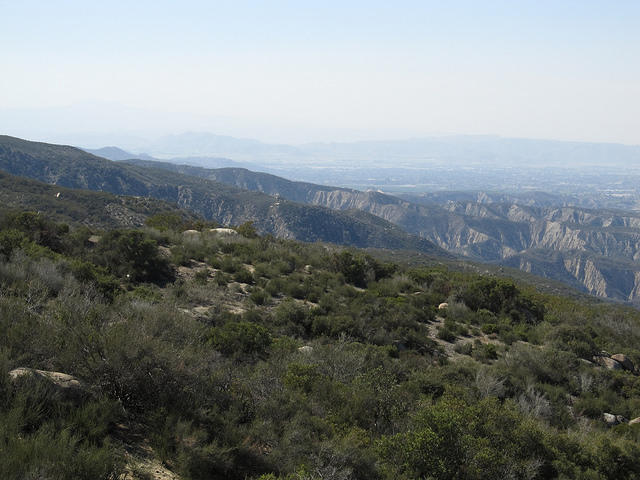San Jacinto Valley

With more than 20 special-status species residents for much of the year, and supporting thousands of waterbirds from late summer through spring, the San Jacinto Valley is one of the most vital IBAs in California. The San Jacinto Valley occupies a landlocked, interior valley on the coastal slope of southern California in western Riverside County. Roughly boomerang-shaped, it extends roughly 50 kilometers along the San Jacinto River, from the base of the San Jacinto Mountains east of Hemet, California, north toward Moreno Valley, and then southwest toward Perris. The valley is currently a mix of public open space, agricultural fields (including, increasingly, sod farms), dairies, with either rugged, sparsely settled hills or dense residential and commercial development at its borders.
In 2004, Audubon California identified the “San Jacinto Valley Important Bird Area” (IBA) to draw attention to the exceptional bird habitats present in the valley, whose main habitats include alkali scrub, constructed wetlands (both permanent and seasonal), irrigated fields, and riparian habitats. In 2010, Audubon elevated the valley to an IBA of “global significance” due to the resident breeding population of Tricolored Blackbirds here. While the managed wetland and irrigated habitats were not present historically, these areas nonetheless provide critical resources for regionally declining birds, particularly the sump ponds and silage fields associated with dairies and even tilled fields. From late spring into early fall when water is scarce and native vegetation dormant, birds are concentrated into these anthropogenic habitats in exceptionally large numbers, including young-of-the-year of dozens of species.
Few areas of the state support as many sensitive bird species in such a small area as the San Jacinto Valley and surrounding hills, and a handful of birds, including California Species of Special Concern, maintain their largest breeding or wintering populations in the region in this IBA, such as White-faced Ibis, Ferruginous Hawk, Mountain Plover, Burrowing Owl, and Tricolored Blackbird. Thousands of waterfowl and shorebirds are also present seasonally, but their numbers – particularly of local breeders such as Redhead – are highly dependent on water levels within constructed impoundments at both refuges and waterfowl clubs, and on the large seasonal wetland known as Mystic Lake, which can extend across more than 10 km2 near the center of the valley during wettest years (but can shrink to nothing and become arid alkali scrub and sparse grassland during drier years).
Threats to the IBA
Recently, an unprecedented convergence of threats has made the San Jacinto Valley IBA one of the most imperiled IBA’s in California:
- Residential & Commercial Development (including water transfers)
- Agriculture & Aquaculture
- Energy Production & Mining
- Transportation & Utility Corridors
- Biological Resource Use
- Human Intrusion & Disturbance
- Natural System Modification
- Invasive Species
- Pollution
- Climate Change
Conservation plan
Starting with a series of stakeholder meetings in 2013 and 2014, Audubon California has drawn on a the expertise of these individuals to develop a short list of target bird species and habitats, and a set of recommended actions to enhance their survival in the IBA. Not any one action, or any one group or individual would be responsible for “saving” these species; however, working together, we can all make meaningful contributions toward preserving the ecological integrity of this area, which includes vast wetlands, native coastal scrub, and a mix of agricultural habitats attractive to birds that have largely disappeared elsewhere in southern California.
Target species
- Redhead
- Mountain Plover
- Burrowing Owl
- Loggerhead Shrike
- Tricolored Blackbird
How you can help, right now
Get Audubon CA in Your Inbox
Our newsletter is fun way to get our latest stories and important conservation updates from across the state.
Donate to Audubon
Help secure the future for birds at risk from climate change, habitat loss and other threats. Your support will power our science, education, advocacy and on-the-ground conservation efforts.
Let's Protect the Chuckwalla Desert
Join the thousands of Californians that support the proposed Chuckwalla National Monument.




